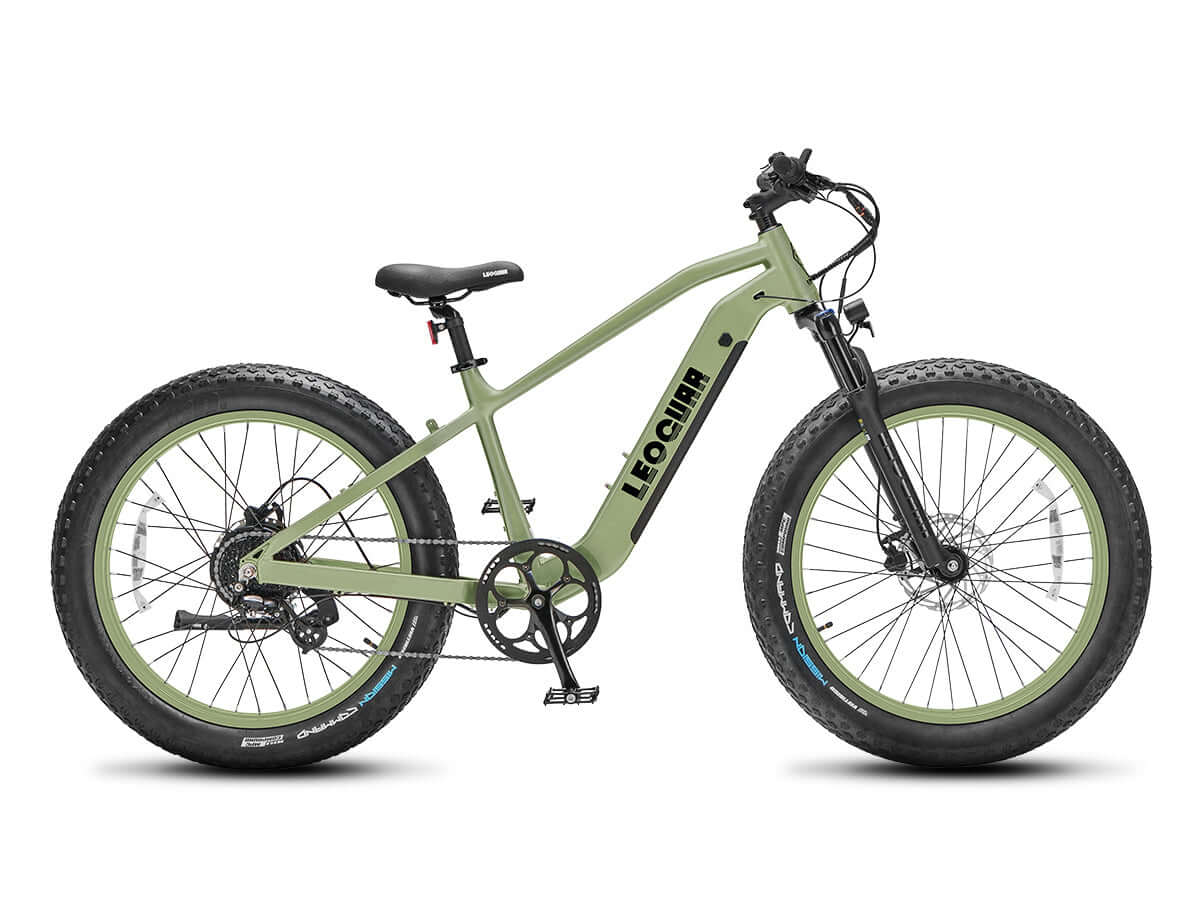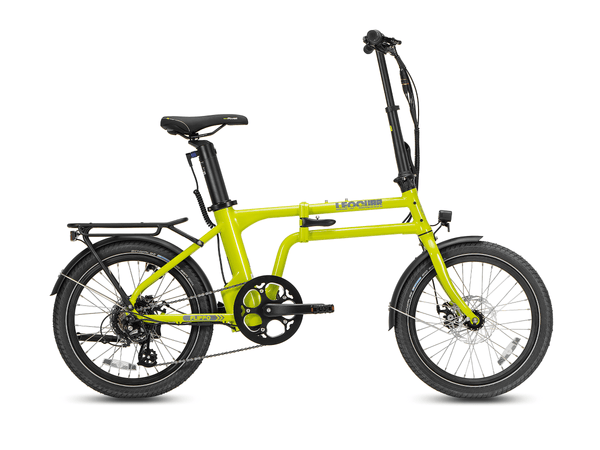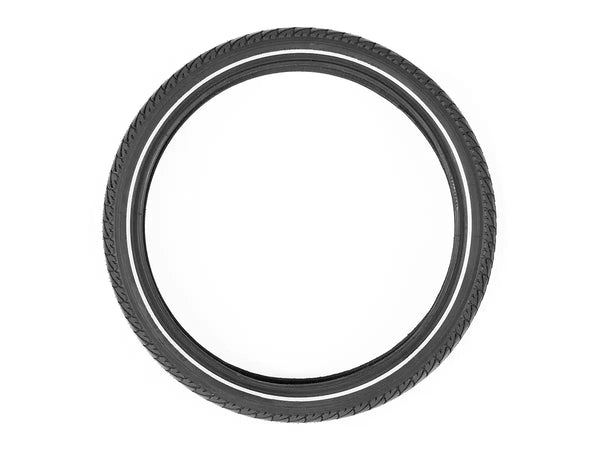
How Much Does It Cost to Replace an Electric Bike Tire?
The Short Answer
So, you have a flat or worn-out e-bike tire and need to know the bottom line. Let's get straight to it. Replacing an electric bike tire typically costs between $50 and $200 per tire, all-in. This price range is wide because it depends on whether you do it yourself or have a professional bike shop handle it. Here's a quick breakdown:
- DIY Replacement: If you're comfortable with the work, expect to pay $35 to $120+ for the new tire and inner tube.
- Professional Shop Replacement: For a hands-off experience, the total cost will be $60 to $200+, which includes the tire, tube, and labor.
This guide will break down every factor that influences the cost of an electric bike tire replacement. We'll cover the parts, labor, and the hidden value in choosing the right tire, helping you make an informed decision and keep your e-bike rolling smoothly and safely.
Why E-Bike Tires Cost More
Before we dive into the numbers, it's important to understand that an e-bike tire is not just a standard bicycle tire with a higher price tag. The added weight, speed, and power from the motor demand special engineering. Simply put, using a cheap, standard tire on an e-bike is not just wasteful; it's unsafe. There are three key reasons why e-bike specific tires are different and justify their cost.
Increased Weight
Electric bikes are heavy. A standard road or hybrid bike might weigh 20-30 pounds, whereas a typical e-bike tips the scales at 45-70 pounds or more. This extra load puts constant, huge stress on the tires.
To handle this, e-bike-rated tires are built with stronger casings and tougher sidewalls. This strong construction prevents the tire from changing shape under load, ensuring stability in corners and preventing early failure.
Higher Speeds and Torque
The motor on your e-bike provides instant power and allows you to maintain higher average speeds than you would on a regular bike. These forces put greater demands on the tire's rubber compound and tread. E-bike tires use more durable rubber compounds to resist the scrubbing forces of speeding up and braking, which would destroy a standard tire in a fraction of the time. The tread patterns are also designed to provide reliable grip at higher speeds, ensuring your bike stays planted on the pavement.
Safety and Puncture Resistance
Getting a flat tire is always a hassle, but it's a much bigger problem on a 60-pound e-bike, especially if you have a rear hub motor. Because of this, most quality e-bike-rated tires are specifically constructed with advanced puncture protection layers. These are belts of special materials like aramid fibers or thick, flexible rubber built into the tire's casing. This feature is a critical investment in both safety and convenience, dramatically reducing your risk of getting stranded.

Detailed Cost Breakdown
The total cost to replace an electric bike tire is a sum of two things: the parts (tire and tube) and the labor (if you go to a shop). The price of the tire itself is the biggest variable, depending on the type of e-bike you own.
| E-Bike Tire Type | Tire Cost (Per Tire) | Inner Tube Cost | DIY Total (Parts Only) | Pro Shop Total (Est. Parts + Labor) | Best For |
|---|---|---|---|---|---|
| Standard Commuter/Hybrid E-Bike Tire | $35 - $60 | $8 - $15 | $43 - $75 | $65 - $115 | Paved roads, daily commuting |
| Fat Tire E-Bike Tire | $60 - $120 | $15 - $25 | $75 - $145 | $110 - $200+ | All-terrain, sand, snow, comfort |
| Performance E-MTB/Gravel Tire | $70 - $100+ | $10 - $20 | $80 - $120+ | $110 - $170+ | Off-road trails, high-performance |
Don't Forget the Inner Tube
Unless you're running a tubeless setup (common on high-end e-MTBs), you will need a new inner tube. Even if the old tube isn't punctured, it's best practice to replace it when you replace a tire. Over time, tubes can become brittle or stretched, and installing a fresh one for $8-$25 is cheap insurance against an early flat.
The Cost of Labor
If you take your e-bike to a shop, expect to pay a labor charge of $20 to $50 per wheel. This cost can be higher for e-bikes than for standard bikes for a few key reasons. First, the wheels and tires are heavier and more difficult to work with. Second, and most importantly, is the complexity of hub-drive motors. Changing a rear tire on an e-bike with a hub motor requires mechanics to carefully disconnect motor wires and sometimes other sensors.
It's a more delicate and time-consuming process than on a standard bike, and the labor cost reflects that. This is a common point of discussion, and you can find many real-world accounts from bike mechanics and riders confirming the extra steps involved.
DIY vs. Pro Service
Now that you understand the costs, the next question is whether you should tackle the job yourself or leave it to a professional. The right choice depends on your budget, tools, and comfort level.
DIY Replacement
- Pros: The most obvious benefit is cost savings. You'll save the $20-$50 in labor fees, and you'll learn a valuable skill that can save you from being stranded in the future. You can do the repair on your own schedule, without having to transport your heavy bike to a shop.
- Cons: You need the right tools, including a good set of tire levers and a pump. For some tight-fitting tires, the process can be physically demanding and frustrating.
The biggest challenge is with rear hub motors. If you aren't comfortable unplugging and re-plugging electrical connectors, or you're worried about damaging the cable, this job can quickly become a headache.
Professional Shop Service
- Pros: This is the fast, convenient, and hassle-free option. A professional mechanic has the right tools and experience to do the job quickly and correctly. You get peace of mind knowing the tire is seated properly, the tube isn't pinched, and any motor connections are secure.
- Cons: The primary drawback is the higher upfront cost due to labor. You also have to get your bike to and from the shop, which can be a chore with a heavy e-bike.
From our experience, the choice often comes down to the wheel. A front wheel replacement is a relatively simple DIY job for most people.
However, for a rear wheel on a hub-drive e-bike, the professional labor cost is often money well spent. We once tried to save $30 by changing a rear tire on a hub-drive commuter ourselves. After an hour of struggling with a tight tire bead and worrying about damaging the delicate motor cable, we realized the time and peace of mind a professional offers is often worth every penny, especially if it's your primary mode of transportation.
Beyond the Sticker Price
When you're trying to figure out how much it costs to replace a bike tire, it's easy to focus only on the upfront price. However, a smarter approach is to consider the long-term value and the hidden costs of making the wrong choice. This is especially true for an e-bike, where the tire is a critical performance and safety component.
Think in Cost-Per-Mile
A more advanced way to look at tire cost is to think in "cost-per-mile." A cheap, $50 tire that wears out after only 1,000 miles costs you $0.05 per mile. A high-quality, $90 touring e-bike tire that lasts for 3,000 miles costs you only $0.03 per mile. The more expensive tire is actually the better value. E-bike tires typically last between 1,500 and 3,000 miles, with premium models lasting even longer. Investing in durability pays off.
The Cost of the Wrong Tire
Using a standard, non-e-bike-rated tire to save money is a false economy that comes with real risks:
- Faster Wear: The softer rubber and weaker casing will degrade rapidly under the weight and torque of an e-bike, forcing you to replace it much sooner.
- Safety Risks: A standard tire is more susceptible to blowouts from heat and stress. Its tread isn't designed for the braking forces of a heavy e-bike, leading to longer stopping distances and less control.
- Poor Performance: An under-specced tire will feel squirmy and unstable, and its higher rolling resistance can even reduce your battery's range.
Is Puncture Protection Worth It?
Absolutely. The extra $10 to $20 you spend on a tire with a high-quality puncture-resistant belt (from brands like Schwalbe, Continental, or Vittoria) pays for itself the very first time you roll over a piece of glass and don't get a flat. The inconvenience of fixing a flat on the side of the road is magnified tenfold on a heavy e-bike. That extra investment is one of the best you can make for reliability and peace of mind.

Investing in the Right Ride
In summary, the all-in cost to replace an electric bike tire is typically between $60 and $200, depending on the tire you choose and whether you have it professionally installed. While it's tempting to look for the cheapest option, it's crucial to remember that for an electric bike, the tire is a vital component for safety, performance, and reliability.
The smartest decision, both financially and for your safety, is to choose a tire specifically rated for e-bike use. By considering the long-term value and cost-per-mile instead of just the initial price, you ensure a better, safer ride. Now that you know how much it costs to replace an electric bike tire and what goes into that cost, you can budget wisely and keep your e-bike rolling efficiently for thousands of miles to come.
Frequently Asked Questions
How often do electric bike tires need to be replaced?
E-bike tires typically last between 1,500 and 3,000 miles depending on the tire quality, riding conditions, and your bike's weight. Premium tires with reinforced construction can last even longer. Regular inspection for wear and tear will help you determine when replacement is needed.
Can I use regular bike tires on my electric bike?
While regular bike tires might physically fit your e-bike, they're not recommended for safety reasons. E-bikes are heavier and faster than regular bikes, requiring specialized tires with reinforced construction, better puncture protection, and rubber compounds designed to handle the extra stress and torque.
Is it worth paying extra for puncture-resistant e-bike tires?
Yes, puncture-resistant tires are definitely worth the extra $10-$20 investment. The convenience of avoiding flats, especially on a heavy e-bike, far outweighs the additional cost. Quality puncture protection can dramatically reduce your risk of getting stranded with a flat tire.
Should I replace both tires at the same time?
It's not necessary to replace both tires simultaneously unless they're both worn out. However, if one tire has failed prematurely due to age or poor quality, it might be wise to replace both to avoid another breakdown soon after. Consider the age and condition of both tires when making this decision.
How can I make my e-bike tires last longer?
To extend tire life, maintain proper air pressure (check weekly), avoid riding on rough surfaces when possible, rotate tires periodically if they have directional tread, store your bike in a cool, dry place, and inspect tires regularly for embedded debris or signs of wear. Proper maintenance can significantly increase tire lifespan.












































Leave a comment